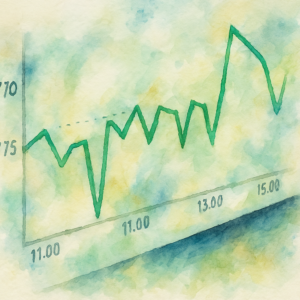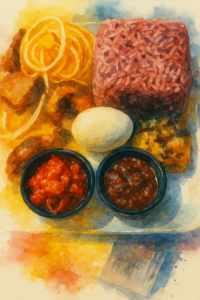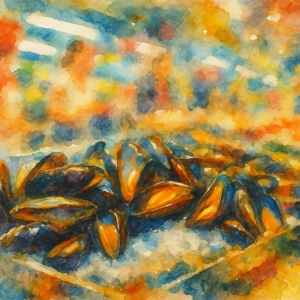Do you know “déjeuner à la tasse”? While not from this day and age, it is a concept in French culture. Hear it in this clip of French in real life! Start at any level, choose how much of the transcript you can see and fill in the rest as you listen. Improve your French…
Take the quiz, join the conversation.
Did you find this one challenging or easy? Did you hear something diffferent? What surprised you? What levels did you complete? Comment below and share what’s opening up for you with this quiz.
This clip is from Manger Episode 1. Listen and fill in what you hear below. Read more and find a translation below. Listen to the full episode here.
This audio sample and transcription is from Manger ep. 1. We do not own the content. Listen to the entire episode
breakfast in a cup
What’s opening up for you in this clip?
The snippet in English
Find a translation of this snippet here, how much of this did you hear?
On appelle ça, à l’époque le déjeuner à la tasse pour le distinguer du déjeuner à la fourchette, ce qu’on appelle aujourd’hui le déjeuner en fait.
In those days, we called it breakfast by the cup to distinguish it from breakfast by the fork, which is what we call lunch today.
The above translation from Deepl. Source
What does “déjeuner à la tasse” or “déjeuner à la fourchette” mean?
Déjeuner à la tasse:
This phrase translates to “breakfast in a cup.” It refers to a time in French history when having a light breakfast, often consisting of hot beverages like coffee or tea, accompanied by pastries or bread, was a common practice.
In the past, particularly during the 19th and early 20th centuries, it was customary for many French people to start their day with a simple breakfast enjoyed from a cup or mug. This practice reflected a more modest and time-efficient approach to breakfast.
The phrase “l’époque du déjeuner à la tasse” highlights a historical dining habit and the changing breakfast traditions over time. It evokes a sense of nostalgia for a simpler, cup-based breakfast in contrast to contemporary breakfast routines.
Déjeuner à la fourchette:
“Déjeuner à la fourchette” translates to “lunch with a fork” in English. It refers to a more formal and substantial midday meal that includes several courses and requires the use of utensils such as a fork.
“Déjeuner à la fourchette” indicates a more leisurely and structured lunchtime experience. It typically involves multiple courses, including appetizers, main dishes, and desserts, and may include socializing and extended conversations around the table.
The phrase highlights the importance of lunch in French culture as a significant meal of the day. It emphasizes the idea of taking the time to enjoy a complete meal with proper table manners and the use of utensils.
What did you love about this?
Comment below with your feedback! Tells us what you think. Send a note or leave a comment below. We appreciate the feedback. Also, we’re always looking for partners to build this site and grow the content available.
Do you know “déjeuner à la tasse”? While not from this day and age, it is a concept in French culture. Hear it in this clip of French in real life! Start at any level, choose how much of the transcript you can see and fill in the rest as you listen. Improve your French…
Take the quiz, join the conversation.
Did you find this one challenging or easy? Did you hear something diffferent? What surprised you? What levels did you complete? Comment below and share what’s opening up for you with this quiz.








